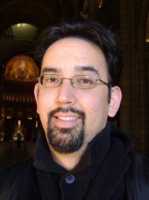Author Interviews, Autism, Nature, Pediatrics / 27.11.2018
Gene Expression Differences Detected in Toddlers with Autism
MedicalResearch.com Interview with:
Michael Lombardo, PhD
Assistant professor of Psychology
the University of Cyprus
MedicalResearch.com: What is the background for this study?
Response: Autism is a diagnostic label we give to children with difficulties in the areas of social-communication and restricted, repetitive stereotyped behaviors and interests. The diagnosis is made based on observations about behavior and is a consensus label, meaning that clinicians can show high degrees of agreement that a given set of behaviors is ‘autism’. But aside from the diagnostic label, there is a fair degree of heterogeneity within patients that have the diagnosis. One way in which patients are heterogeneous is with regard to early language development. Some toddlers with autism are minimally verbal, while at the other end, many toddlers with autism develop language typically. An important question to answer is whether that kind of difference in language development indicates a subtype with different underlying biology.
To examine this question, we first split toddlers with autism into two subtypes defined by their language outcome at 4 years of age. Some toddlers were classified as poor language outcome, because their language performance was 1 standard deviation below typical norms. Other toddlers with autism had relatively good language outcome, as their language performance by 4 years of age was within 1 standard deviation of typical norms.
We also measured the biology behind these two autism subtypes. First we used functional magnetic resonance imaging (fMRI), which is a non-invasive method to look at blood oxygenation response that changes according to a task. Blood oxygenation changes are an indirect measure of neural activity. We used fMRI during natural sleep at around 29 months of age while the toddlers were played language stimuli through headphones to elicit neural responses to speech. Second, we measured molecular aspects of biology, by taking blood samples, isolating leukocyte cells, and then quantifying gene expression for all protein coding genes in the genome, at around the same time as the fMRI scan.
(more…)

